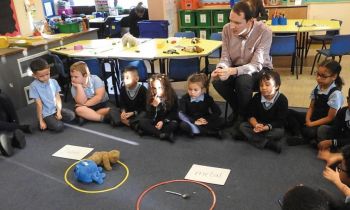As primary headteachers will be all too aware, phonics and its place within the teaching of reading is a contentious and policy-driven topic within early years and KS1.
While Nick Gibb declared the ‘reading wars’ over, there remain serious differences of opinion between those who propose phonics ‘first and fast’ and those who favour a more balanced approach.
School leaders’ ability to make decisions on what is best in their schools is influenced by the Department for Education’s limited number of approved phonics schemes, and the requirement from Ofsted that all schools use and stick to a particular scheme.
Nonetheless, there remains some freedom to teach children to read in whatever way the teachers choose, as long as phonics remains a central element.
Teachers under pressure
Our research, including a questionnaire answered by over 2200 teachers, found that the dominant method of teaching reading was focused on synthetic phonics.
Of the 634 teachers from nursery, reception, and Year 1 who answered a question about their approach to phonics, 66% (420) said that synthetic phonics was their main focus compared to 1% (9) who said whole texts were seen as the main emphasis and context for teaching reading.
While there are obviously variations in practice, some teachers are clearly under pressure to focus on phonics intensely; one teacher felt that they had to “live and breathe phonics”.
This dominance marks a shift from decades of practice in the teaching of reading, where being taught the alphabetic code was an important part of, but not the overwhelmingly dominant activity in, learning to read.
Practice has been hugely influenced by the introduction of the Phonics Screening Check in Year 1 in 2012, but also by the growth of published phonics schemes, pressure from Ofsted, and requirements in teacher education.
No evidence for current policy
Given this finding, we sought to establish, using a systematic review of the existing research, whether synthetic phonics, as currently required in England, was the most effective method of teaching children to read.
We found, as detailed in the most comprehensive paper ever published about teaching phonics and reading, that the most robust research evidence from randomised control trials with longitudinal designs does not support current policy.
The most rigorous experimental trials have tested children’s reading some years after the interventions finished. Studies from Canada and Norway, for example, clearly showed that effective teaching of phonics and reading was delivered by class teachers who combined phonics with teaching of whole texts in literacy lessons.
As a result, the gains for children were statistically significant, resulting in them making better progress.
Policy review needed
These findings led us to organise an open letter to the Secretary of State for Education on how reading is taught in England.
There is clearly evidence which would support a change in policy, with a move towards ‘balanced instruction’, where phonics is embedded with teaching of real texts and includes comprehension activities.
In the meantime, however, there are a number of ways in which headteachers and classroom teachers can use international evidence to support alternative ways of working.
Phonics is increasingly taught as a separate subject from English or literacy, so that the learning of phonemes is divorced from the meaning of words or the pleasure of reading texts.
Teaching these together, with the skills intertwined, is a preferable option. Relatedly, preparing children for the phonics screening check should not be a major focus of phonics lessons (though we are obviously aware of the pressures some school leaders are under in relation to statutory testing).
A guiding principle should be that phonics is important, but there should be no over-emphasis on one part of learning to read.
Alice Bradbury is Professor of Sociology of Education and Dominic Wyse is Professor of Early Childhood and Primary Education, at UCL Institute of Education.










